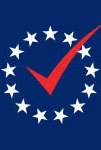Date Published: 2020-09-01
Author(s):
The MIT Election Data & Science Lab and the Stanford-MIT Project on a Healthy Election
Abstract:
Managing how Americans vote in 2020 is one of the greatest challenges facing the nation. If the voting environment is unsafe, the risk of spreading infection from the act of voting is real. If the voting environment is perceived as being unsafe, voters may not come to the polls.
A general consensus has emerged among the broader elections community that providing a safe voting environment starts by allowing any voter who wishes to vote by mail to do so. This would reduce the number of voters in confined spaces, either on Election Day, or during early voting periods before Election Day. Achieving an increase in voters balloting by mail is recognized by all as being a steep logistical challenge, requiring the reallocation of resources and redesign of procedures at a pace never before seen in the history of American elections.
Even if large numbers of voters choose to vote by mail--current estimates range from 50 to 70 percent of voters--in-person voting will still be necessary. Some voters will need to vote in person. In-person voting can serve as a failsafe for those who have been unsuccessful in navigating the mail-ballot route. In states with Election-Day registration, it may be the only way some new voters can participate. For others, with certain disabilities or in need of assistance, a physical polling location will also be a necessity. Many voters will decide at the last minute to vote, and may be unable to navigate the vote-by-mail system before Election Day.
